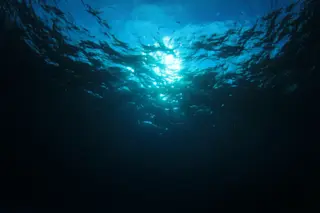We think of mass extinctions as brief moments of havoc — profoundly devastating but over within a geologic instant. The Devonian, the second of the so-called "Big Five,” defies this notion. If the other great die-offs are short stories of death and destruction, this one is an epic akin to War and Peace. Even that paradoxical title seems fitting: The Devonian extinction ravaged Earth on and off for 25 million years, and although it ultimately killed three-quarters of all species, it also cleared the way for a new balance of animal life that endures to this day.
The extinction began roughly 380 million years ago, midway through the segment of geologic time known as the Devonian period, or the age of fish. (Vertebrates hadn’t yet made the leap onto land.) The prehistoric waters teemed not with the likes of tuna, sardines and salmon, but with their bizarre, long-dead predecessors. At ...















